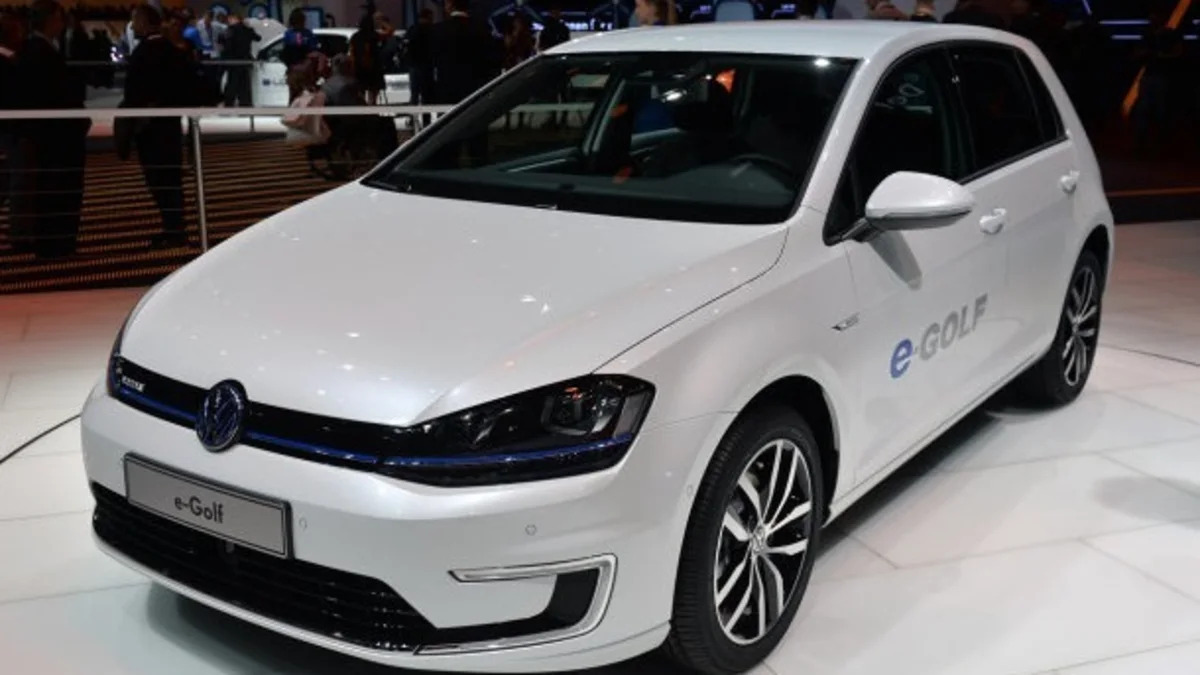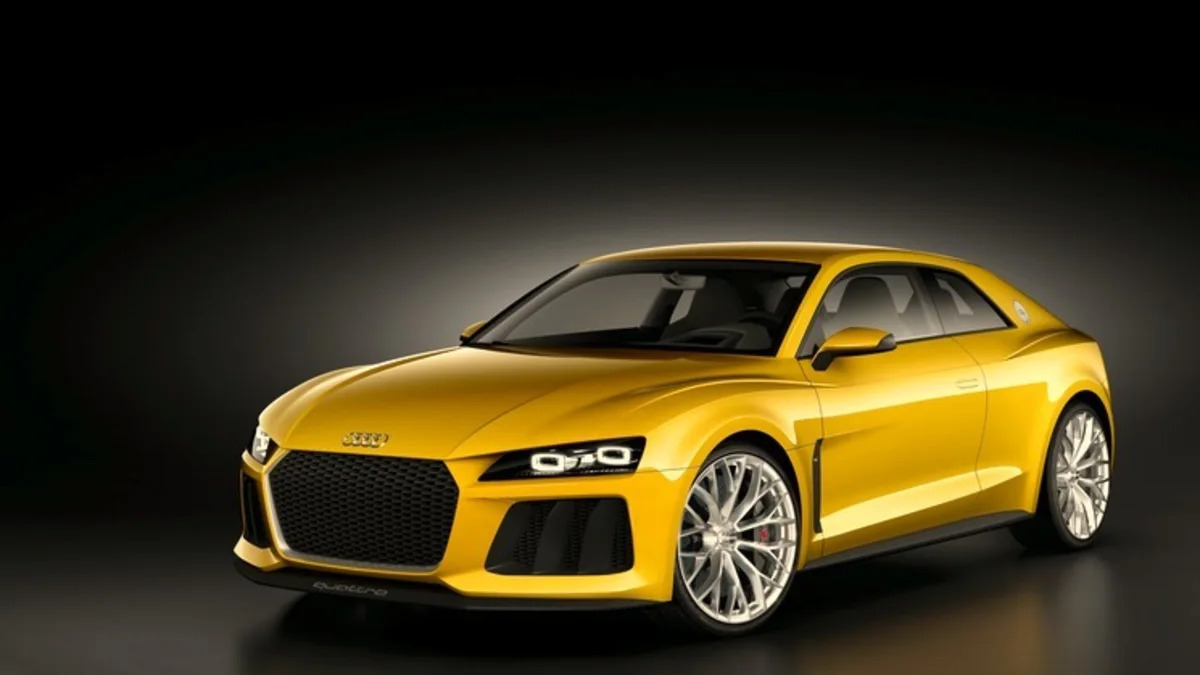Electric Cars And Hybrids Don't Have To Be Frumpy
Sep 11, 2013

-

- Image Credit: Pete Bigelow
Today, the lines are blurred.
If there's a takeaway from the Frankfurt Motor Show this week, it's that sports cars and hybrids can be one in the same. And if there's another, it's that fuel-saving powertrains are here to stay. -
- Image Credit: Pete Bigelow
The plunge into alternate powertrains was perhaps best seen at Porsche. Fifty years after unveiling the iconic 911 here in Frankfurt, executives showed off the Porsche 918 Spyder hybrid, which resembles a high-performance Italian sports car, reaches 62 miles per hour in 2.8 seconds and achieves the equivalent of 72 miles per gallon.
Those three cars were among the highlights Tuesday, the first day of the Frankfurt show, at which approximately 70 models made their debuts.
"Manufacturers are trying to capture magic through a combination of electrification and inventive styling," said Jack Nerad, executive editorial director at Kelley Blue Book. "The Europeans hope to keep their sporty, performance-oriented edge, tough in light of the drumbeat for fuel efficiency and low CO2 emissions."
Over the next three years, European carmakers will invest approximately 40 percent of their research and development costs in the expansion of alternate-powertrain technology, according to projections from the Internationale Automobil-Ausstellung, which runs the motor show. -
- Image Credit: autoblog
"We're not talking two or three niche models," said Martin Winterkorn, VW's chairman of the board. "Electric traction is at the heart of our plans. ... The market is slowly opening up."
As in the United States, it remains a small portion of overall sales in Europe. But in Europe, growth in electric vehicle sales has doubled every year since 2007, prompting the likes of a reluctant company like Volkswagen to enter the market.
In Frankfurt, the company unveiled the e-Up! and e-Golf and, which achieve 118 miles and 99 miles per charge, respectively. Powered by a 113-horsepower motor, the e-Golf is scheduled to be VW's first electric in the United States, arriving sometime in early 2015. -
- Image Credit: Audi
Such a forecast could be equally tricky to meet in Europe given the faltering economy. Business leaders here foresee a stagnant market and no quick fixes. Economic worries, though, trickle to consumers who envision savings with electric cars.
"Environment and specifically electrification seem to be on everyone's mind," Nerad said. "A key word at the show was 'efficiency,' not a word you heard very much 10 years ago. The European market is at a very low ebb ... yet the variety of products introduced was tremendous. This is an indication of how hotly competitive the industry has become."


